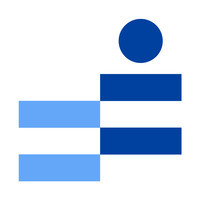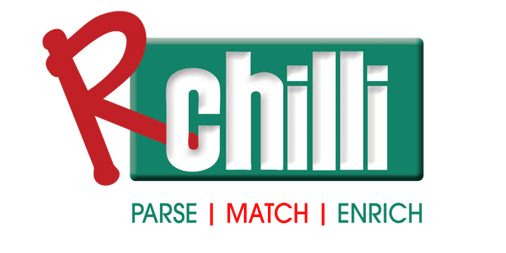Description

Talent Recruiter

Candidate.ID
Comprehensive Overview: Talent Recruiter vs Candidate.ID
Talent Recruiter and Candidate.ID are tools designed to streamline and enhance the recruitment process, each offering distinct functionalities that cater to different aspects of talent acquisition.
a) Primary Functions and Target Markets
Talent Recruiter:
- Primary Functions:
- Talent Recruiter typically offers applicant tracking systems (ATS) that manage the recruitment process from end-to-end. This includes job posting distribution, resume parsing, interview scheduling, and compliance tracking.
- It often integrates with HR software solutions and utilizes AI to improve candidate matching and streamline administrative tasks.
- Target Markets:
- Mainly targeted at HR departments in medium to large enterprises that require robust recruitment processes.
- Industries could range from technology and finance to healthcare and manufacturing, especially those with high volumes of recruitment.
Candidate.ID:
- Primary Functions:
- Candidate.ID focuses on candidate engagement and pipeline nurturing. It's designed to identify and rank candidates based on their engagement level and potential fit for roles.
- The platform uses real-time behavioral data and candidate scoring to enable recruiters to prioritize outreach and engage with potential hires more effectively.
- Target Markets:
- Suited for organizations that have a strong focus on building talent pipelines and require constant engagement with passive candidates.
- Commonly used by recruitment agencies, large enterprises, and industries that face a talent scarcity and need to build long-term relationships with potential candidates.
b) Market Share and User Base
-
Talent Recruiter:
- As ATS platforms are fundamental in modern HR departments, Talent Recruiter-type solutions often capture significant portions of the market in terms of user base across various sectors. However, the specific market share would depend on the particular brand or provider.
- This category tends to have a broad user base due to its essential role in HR.
-
Candidate.ID:
- Candidate ID solutions might hold a smaller market share compared to general ATS solutions but are valuable in niches that focus on long-term candidate relationship management.
- The user base is typically more specialized, including recruiters and HR professionals who prioritize talent pool nurturing.
c) Key Differentiating Factors
-
Functional Focus:
- Talent Recruiter solutions focus on managing application processes and operational efficiencies, covering the entire recruitment cycle.
- Candidate.ID centers on candidate attraction, engagement, and nurturing. It's more about building relationships and less about process automation.
-
Technology and Data Usage:
- Talent Recruiters often use AI for operational efficiency, such as enhancing resume filtering and interview scheduling.
- Candidate.ID distinguishes itself by its use of behavioral data analytics and scoring to drive personalized candidate interactions.
-
Strategic Approach:
- Talent Recruiter is process-oriented, optimizing how companies manage applicants.
- Candidate.ID is strategy-oriented, emphasizing a long-term approach to securing talent by keeping candidates engaged and interested over time.
In summary, while both Talent Recruiter and Candidate.ID serve the recruitment industry, they cater to different needs within that domain. The former focuses on automating recruitment processes, while the latter emphasizes maintaining candidate interest and readiness for future opportunities. The choice between the two often boils down to whether a company's priority is immediate recruitment efficiency or long-term talent engagement.
Contact Info

Year founded :
Not Available
Not Available
Not Available
Pakistan
Not Available

Year founded :
Not Available
Not Available
Not Available
Not Available
Not Available
Feature Similarity Breakdown: Talent Recruiter, Candidate.ID
To provide a feature similarity breakdown for the Talent Recruiter and Candidate.ID platforms, we need to consider several aspects, including core features, user interfaces, and unique features. Please note that specific details about these platforms are subject to updates, and the following information is based on general knowledge and typical functionalities of recruitment software as of the latest data:
a) Core Features in Common
-
Applicant Tracking System (ATS):
- Both platforms likely include an ATS for managing job applications, tracking candidates through various stages of the hiring process, and maintaining candidate profiles.
-
Candidate Sourcing:
- Tools for sourcing candidates from various channels such as job boards, social media, and career sites are typically common features.
-
Communication Tools:
- Features to facilitate communication with candidates via email, SMS, or in-app messaging are common, helping streamline recruiter-candidate interactions.
-
Analytics and Reporting:
- Both platforms likely offer analytics and reporting features that help recruiters track key performance indicators (KPIs) and optimize recruitment strategies.
-
Collaboration Tools:
- Tools for collaboration within recruitment teams, allowing for comments, feedback, and sharing of candidate profiles.
-
Integration Capabilities:
- Integration with other HR tools and platforms, such as HRIS systems and background check providers, is a standard feature to ensure seamless workflows.
b) User Interface Comparison
-
Design and Usability:
- Both platforms are likely designed with user-friendliness in mind, offering clean and intuitive interfaces. The specific design elements and user experience may vary, with each platform showcasing its unique layout and iconography.
-
Customization:
- The extent of customization available in the user interface can differ. This includes configurable dashboards, custom views, and personalized workflows to suit recruiters’ specific needs.
-
Mobile Accessibility:
- The user interface might include mobile-friendly features or dedicated mobile apps to allow recruiters to access the platform on the go.
c) Unique Features
-
Talent Recruiter:
- Advanced Filtering and Matching Algorithms: Talent Recruiter may offer sophisticated candidate matching based on advanced algorithms, which can more accurately match candidates with job requirements.
- Employer Branding Tools: Additional features to enhance employer branding might be available, allowing organizations to showcase their values and work culture effectively.
-
Candidate.ID:
- Candidate Engagement Scoring: Candidate.ID is known for its lead scoring capabilities to assess candidate engagement levels, identifying which candidates are more likely to respond to job opportunities.
- Automated Campaigns: Unique automation for personalized candidate engagement campaigns over time, nurturing passive candidates until they are ready to apply.
Conclusion
While Talent Recruiter and Candidate.ID share several core features typical of recruitment software, each platform offers distinctive functionalities that cater to specific user needs. Talent Recruiter may excel in comprehensive filtering and employer branding tools, while Candidate.ID is distinguished by its focus on engagement scoring and automation for candidate nurturing. Evaluating their user interfaces would involve examining user feedback for ease of use, customization options, and mobile accessibility.
Features

Not Available

Not Available
Best Fit Use Cases: Talent Recruiter, Candidate.ID
Talent Recruiter
a) Best Fit Use Cases
Types of Businesses or Projects:
-
Large Enterprises:
- High Volume Hiring: Talent Recruiter is well-suited for large companies that need to fill a substantial number of roles efficiently through a structured process.
- Global Talent Acquisition: Enterprises with global operations can benefit from Talent Recruiter's ability to manage complex hiring processes across different regions.
-
Recruitment Agencies:
- Agency Efficiency: Recruitment agencies that handle numerous clients and positions can use Talent Recruiter's streamlined processes to manage their talent pools and client requirements effectively.
-
Long-Term Strategic Hiring:
- Companies focusing on building a strong talent pipeline and engaging with potential candidates over a longer time frame can benefit from Talent Recruiter’s comprehensive approach.
Projects:
- Campus Recruitment Drives: Ideal for companies looking to engage with colleges and universities to onboard a significant number of fresh graduates.
- Diversity and Inclusion Initiatives: Can help organizations execute specific recruitment campaigns aimed at enhancing diversity and inclusion within the workforce.
Candidate.ID
b) Preferred Use Cases
Scenarios:
-
Nurturing Passive Candidates:
- Ideal for companies that want to engage with passive candidates who might not be actively looking for a job but are valuable for future hiring needs.
- Provides ongoing communication and engagement through tailored content and updates, keeping candidates warm for future roles.
-
Targeted Recruitment Campaigns:
- Suitable for organizations running campaigns to attract candidates with specific skills or from particular industries, allowing for customized engagement based on individual candidate profiles.
-
Mid-sized Companies:
- Companies that need to efficiently manage candidate pipelines without the complexity of large-scale operations but still require targeted engagement capabilities.
Projects:
- Skill-Specific Recruiting Events: Organizing and managing recruitment events focused on niche skills or sectors.
- Employer Branding Campaigns: Enhancing employer brand through consistent and personalized engagement with potential candidates, thereby improving the quality of future applicants.
d) Catering to Industry Verticals and Company Sizes
Industry Verticals:
- Technology and IT Services: Both Talent Recruiter and Candidate.ID can cater to the fast-paced hiring needs of tech companies, supporting high-volume hiring and skill-specific recruitment campaigns.
- Healthcare: With a focus on building pipelines of qualified healthcare professionals and engaging passive candidates for specialized roles.
- Financial Services: Catering to the stringent and high-stake hiring needs by maintaining a continuous engagement with top talent.
- Manufacturing: Managing skilled trade placements and aligning with the cyclical hiring patterns often seen in manufacturing.
Company Sizes:
- Small to Mid-Sized Enterprises (SMEs): Candidate.ID is particularly useful for SMEs aiming to create a strong employer brand and engage candidates without substantial resources.
- Large Corporations: Talent Recruiter is robust for large corporations needing a scalable solution to manage complex recruitment processes across multiple locations and departments.
In summary, Talent Recruiter is ideal for organizations with a need for structured, high-volume, and possibly global recruitment processes, while Candidate.ID excels in scenarios requiring targeted, ongoing engagement with passive candidates and skill-specific talent pipelines. Each product caters to specific needs based on company size and industry focus, ensuring flexibility and efficiency across different hiring landscapes.
Pricing

Pricing Not Available

Pricing Not Available
Metrics History
Metrics History
Comparing undefined across companies
Conclusion & Final Verdict: Talent Recruiter vs Candidate.ID
To provide a comprehensive conclusion and final verdict on the two products, Talent Recruiter and Candidate.ID, it’s important to examine their features, strengths, and drawbacks. This will help in determining which product offers the best overall value, identify the pros and cons of each, and offer specific recommendations.
Conclusion and Final Verdict
a) Overall Value
Talent Recruiter generally provides the best overall value for organizations seeking a robust, all-encompassing recruitment platform. Its strengths lie in its extensive feature set, which typically includes applicant tracking, job posting, and interview scheduling, all managed in an integrated system. This makes it an excellent solution for companies looking for efficiency and seamless management of their recruitment process.
Candidate.ID, on the other hand, is more specialized, focusing on talent pipeline engagement through candidate relationship management (CRM). It’s particularly valuable for organizations that prioritize nurturing passive candidates and maintaining long-term talent relationships.
b) Pros and Cons
Talent Recruiter:
- Pros:
- Comprehensive features covering the entire recruitment lifecycle.
- Centralized management of recruitment activities.
- Streamlined process from job posts to onboarding.
- Typically includes analytics and reporting capabilities for monitoring recruitment performance.
- Cons:
- Can be overwhelming due to its extensive features.
- May require more training to fully leverage its capabilities.
- Higher cost for full-suite packages compared to specialized tools.
Candidate.ID:
- Pros:
- Specialized in candidate relationship management.
- Excellent for nurturing passive candidates and building talent pipelines.
- Automation in engaging and scoring candidate interactions.
- Potentially increases recruitment efficiency by maintaining a warm talent pool.
- Cons:
- Focus is narrow on candidate engagement, lacking broader recruitment features.
- Seen as a supplementary tool rather than a standalone recruiting solution.
- May not justify investment if not heavily prioritizing candidate engagement.
c) Recommendations
-
For Larger Organizations or Broad Recruitment Needs:
- Talent Recruiter is recommended. It offers a comprehensive solution that can handle high volumes of applicants and streamline the recruitment process across various stages. It is ideal for companies needing a full-range recruitment tool.
-
For Niche Recruitment or Candidate Engagement:
- Candidate.ID is the better choice for organizations that focus on keeping potential candidates engaged over time, especially those with niche or strategic recruitment focuses where maintaining long-term relationships is crucial.
-
Combining Both:
- For organizations with sufficient resources, using Talent Recruiter as the primary recruitment management tool alongside Candidate.ID for candidate engagement strategies could provide a powerful, comprehensive recruitment system.
Ultimately, the choice between Talent Recruiter and Candidate.ID should align with an organization’s size, recruitment strategy, and specific needs in the recruitment process, with a recommendation for Talent Recruiter for comprehensive needs and Candidate.ID for a focus on candidate relationship management.
Add to compare
Add similar companies



